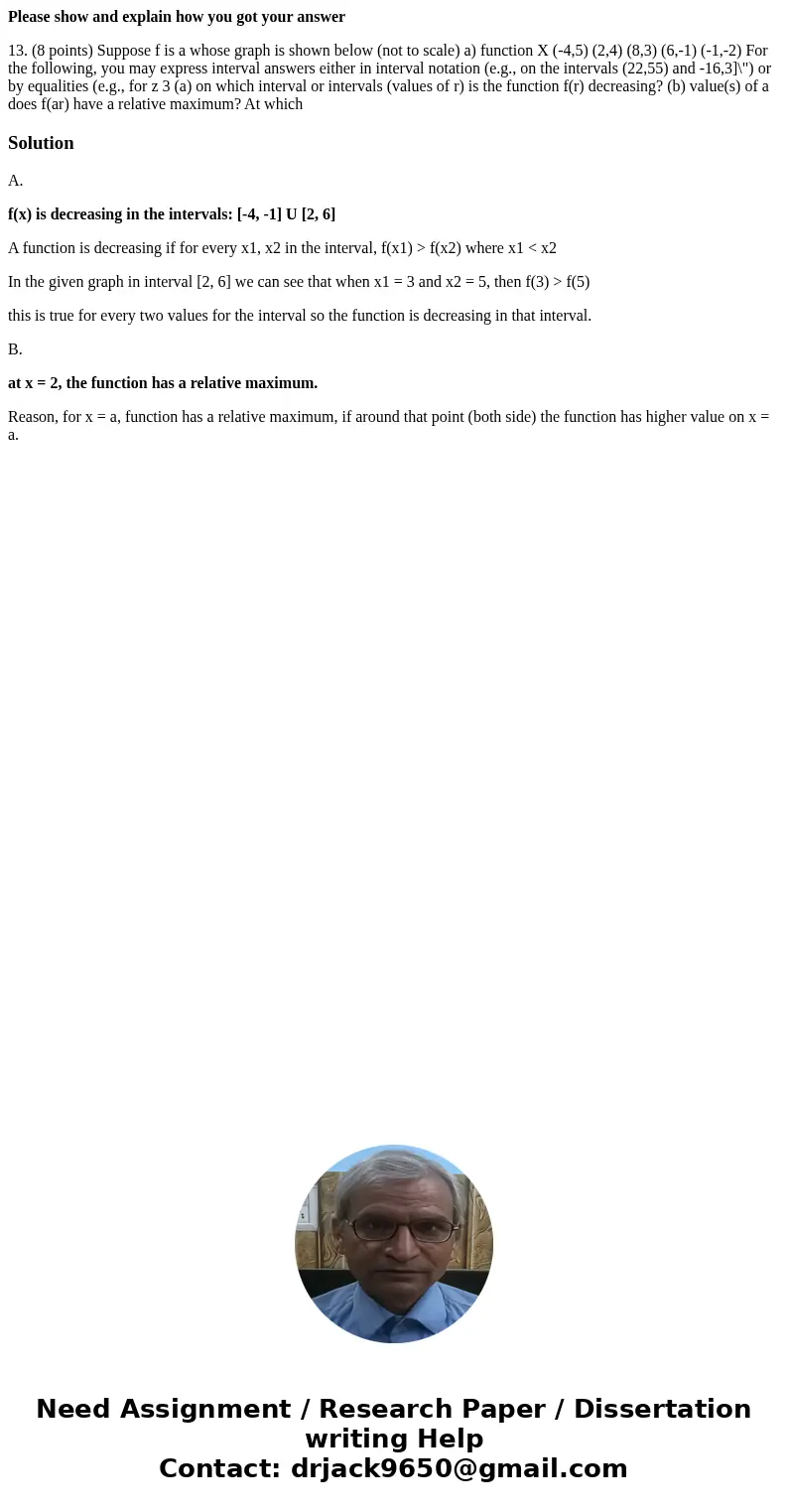Please show and explain how you got your answer 13 8 points
Please show and explain how you got your answer
13. (8 points) Suppose f is a whose graph is shown below (not to scale) a) function X (-4,5) (2,4) (8,3) (6,-1) (-1,-2) For the following, you may express interval answers either in interval notation (e.g., on the intervals (22,55) and -16,3]\") or by equalities (e.g., for z 3 (a) on which interval or intervals (values of r) is the function f(r) decreasing? (b) value(s) of a does f(ar) have a relative maximum? At whichSolution
A.
f(x) is decreasing in the intervals: [-4, -1] U [2, 6]
A function is decreasing if for every x1, x2 in the interval, f(x1) > f(x2) where x1 < x2
In the given graph in interval [2, 6] we can see that when x1 = 3 and x2 = 5, then f(3) > f(5)
this is true for every two values for the interval so the function is decreasing in that interval.
B.
at x = 2, the function has a relative maximum.
Reason, for x = a, function has a relative maximum, if around that point (both side) the function has higher value on x = a.

 Homework Sourse
Homework Sourse